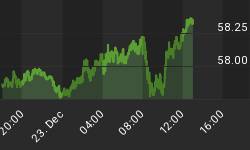The experts go into denial as the credit crisis unfolds
In 2001, Colin Seymour published an article entitled 1927-1933 Chart of Pompous Prognosticators. In it, he documented the many Depression-era assurances given by politicians, economists, financial experts and the media to the public, protesting that everything was fine and there was nothing to worry about. Meanwhile, the stock market would decline by 92%, the US dollar would be devalued by 40%, real estate would drop 30% and unemployment would soar to 25%.
Today, we have a similar situation. Politicians, economists and the media are assuring the public that everything is fine. But governments around the world are frantically borrowing trillions of dollars to fund bailout and stimulus plans, the stock markets have lost over 40% of their value, real estate over 50%, and unemployment is approaching 10% in most major countries.

2004-2009 chart of Pompous Prognosticators | ||
2004 | 1 | "The ability of lending institutions to manage the risks associated with mortgages that have high loan-to-value ratios seems to have improved markedly over the past decade." |
2005 | 2 | "Home sales are coming down from the mountain peak, but they will level out at a high plateau, a plateau that is higher than previous peaks in the housing cycle." |
2006 | 3 | "I don't know, but I think the worst of this may well be over." |
2007 | 4 | "We have a very strong global economy... and I feel very comfortable with the global economy." |
5 | "The impact on the broader economy and financial markets of the problems in the subprime markets seems likely to be contained." | |
6 | "In today's environment, it is virtually impossible to violate rules." | |
2008 | 7 | "Over the next few months, existing-home sales are expected to hold fairly steady as indicated by pending sales activity, then rise later in the year and continue to improve in 2009." |
8 | "Although recent data suggest that the probability of a recession in 2008 has increased, CBO does not expect the slowdown in economic growth to be large enough to register as a recession." | |
9 | "I don't think we're headed to a recession." | |
10 | "I don't anticipate any serious problems of that sort among the large internationally active banks that make up a very substantial part of our banking system." | |
11 | "No! No! No! Bear Stearns is not in trouble." | |
12 | "Later this year, I expect growth will pick up." | |
13 | "Fannie Mae and Freddie Mac are fundamentally sound. They're not in danger of going under.... I think they are in good shape going forward." | |
14 | "My own belief is if we were going to have some sort of big crash or recession, we probably would have had it by now." | |
15 | "We're probably somewhere pretty close to a bottom." | |
16 | "The fundamentals of our economy are strong." | |
17 | "We remain committed to examining all strategic alternatives to maximize shareholder value." | |
2009 | 18 | "It's a huge bull market rally." |
Just as Seymour's Pompous Prognostications proved devastating for those investors who remained complacent due to those false assurances, today's investors would be wise to educate themselves on the real risks and vulnerabilities they face today. In order to preserve their wealth over the coming years, investors need to make wise, informed decisions, stop being complacent, and avoid following the false assurances of politicians and financial experts. With countless risks and vulnerabilities facing the world, the next 20 years will not be the same as the last 20 years.
Sources: FederalReserve.gov, BusinessWeek, CNBC.com, Realtor.org, Marketwatch.com, USA Today, Washington Post, Reuters, Associated Press, Bloomberg, BBC.com, TimesOnline.
















